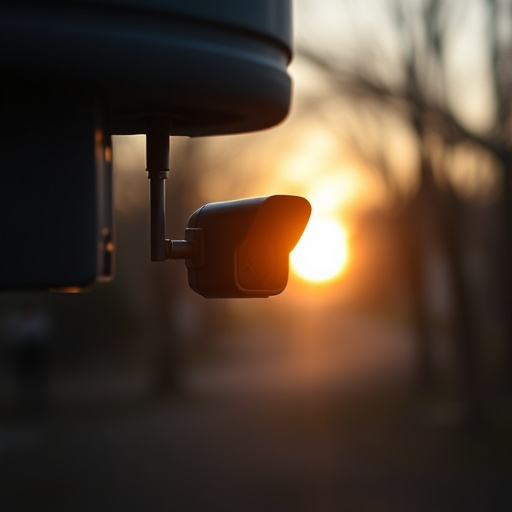Small hidden cameras disguised as everyday objects pose a significant threat to privacy, but a revolutionary light reflection technique offers a solution. By analyzing unique light patterns in bedroom environments, individuals can detect these clandestine devices without causing damage. This method, involving strategic lighting and reflection analysis, identifies small hidden cameras, ensuring personal space security. While effective in enclosed areas, it faces challenges under certain lighting conditions and with advanced camera technology, requiring continuous improvements to remain reliable against evolving privacy threats.
Uncovering covert surveillance in your bedroom? Explore the innovative science behind light reflection detection, a game-changer in identifying small hidden cameras. This technique leverages the invisible to reveal the unseen, transforming how we safeguard our personal spaces. From understanding the technology’s inner workings to its practical application and limitations, this article provides an in-depth guide on using light reflection to detect spy cameras in your bedroom.
- Understanding Small Hidden Cameras for Bedroom Surveillance
- The Science Behind Light Reflection Detection Technique
- Practical Implementation and Countermeasures
- Advantages and Limitations of Using Light Reflection for Spy Camera Detection
Understanding Small Hidden Cameras for Bedroom Surveillance
Hidden cameras, especially small hidden cameras designed for bedroom surveillance, have evolved significantly in recent years. These miniature devices can be almost imperceptible, fitting seamlessly into everyday objects like clocks, smoke detectors, or even plant pots. While they offer a level of discretion, this very feature also makes their detection challenging.
In the quest to secure our private spaces, understanding the capabilities and vulnerabilities associated with small hidden cameras is crucial. The reflection technique, which analyzes light patterns, has emerged as a promising method for detection. By studying the subtle changes in light reflection off surfaces within the bedroom environment, individuals can uncover these clandestine devices, ensuring their personal spaces remain uninvaded.
The Science Behind Light Reflection Detection Technique
The Science Behind Light Reflection Detection Technique
In the realm of spy camera detection, the light reflection technique is a game-changer when it comes to uncovering hidden devices like small hidden cameras for bedroom settings. This innovative approach leverages the principles of light and its interaction with various surfaces. By carefully analyzing subtle variations in reflected light, experts can identify unusual patterns that may indicate the presence of covert recording equipment.
The method works by projecting a bright, focused light source onto potential hiding spots, such as walls, ceilings, or even furniture. As this light encounters an object, it bounces back, reflecting differently depending on the material and surface texture. Analyzing these reflections can reveal anomalies—for instance, a persistent glint or unusual brightness patterns—that might point to the presence of a tiny camera lens. This non-invasive technique ensures no damage is done while providing a robust solution for maintaining privacy in sensitive areas.
Practical Implementation and Countermeasures
The practical implementation of light reflection techniques for spy camera detection involves strategically placing light sources in areas where small hidden cameras for bedroom might be installed, such as corners or behind furniture. This method leverages the principle that most clandestine cameras will reflect light in a way that differs from natural reflections, providing a subtle yet detectable signal. By analyzing these reflections, one can identify potential camera lenses, thereby thwarting their use for surveillance.
Countermeasures against this technique include the use of specialized cameras designed to minimize reflection and blend into their environment, as well as employing materials that scatter or absorb light in a way that mimics natural surfaces. Additionally, some devices have been developed that actively monitor light reflections and alert users to any anomalies, further complicating the detection process. These advancements necessitate continuous refinement of detection methods, pushing the field towards more sophisticated techniques to stay ahead in the cat-and-mouse game between privacy advocates and potential intruders.
Advantages and Limitations of Using Light Reflection for Spy Camera Detection
Using light reflection for spy camera detection offers several advantages when it comes to identifying small hidden cameras in bedrooms or any enclosed spaces. This technique leverages natural or artificial lighting sources to reveal camera lenses, which can be particularly effective in areas where other detection methods may struggle. By analyzing light reflections and distortions, individuals can uncover covert recording devices, such as tiny hidden cameras, that are often meticulously concealed. This approach is non-intrusive, making it a preferred method for privacy protection without causing any physical or digital disturbance.
However, the method is not without limitations. Light reflection detection relies heavily on the quality and angle of lighting, which can make it inconsistent in low-light conditions or environments with significant direct sunlight. Additionally, sophisticated camera technology that employs advanced lenses or infrared capabilities might be harder to detect using this technique. Despite these challenges, continuous advancements in light-based detection methods are being made, offering improved accuracy and reliability in identifying even the smallest hidden cameras for bedroom privacy.
In conclusion, while light reflection analysis offers a promising method for detecting small hidden cameras in bedrooms, it’s not without limitations. Despite its advantages, factors like camera orientation, lighting conditions, and surface materials can impact its effectiveness. To maximize success, combining this technique with other detection methods and staying informed about evolving technology is recommended. This balanced approach ensures a safer and more secure living environment for those concerned about privacy in their own homes.
